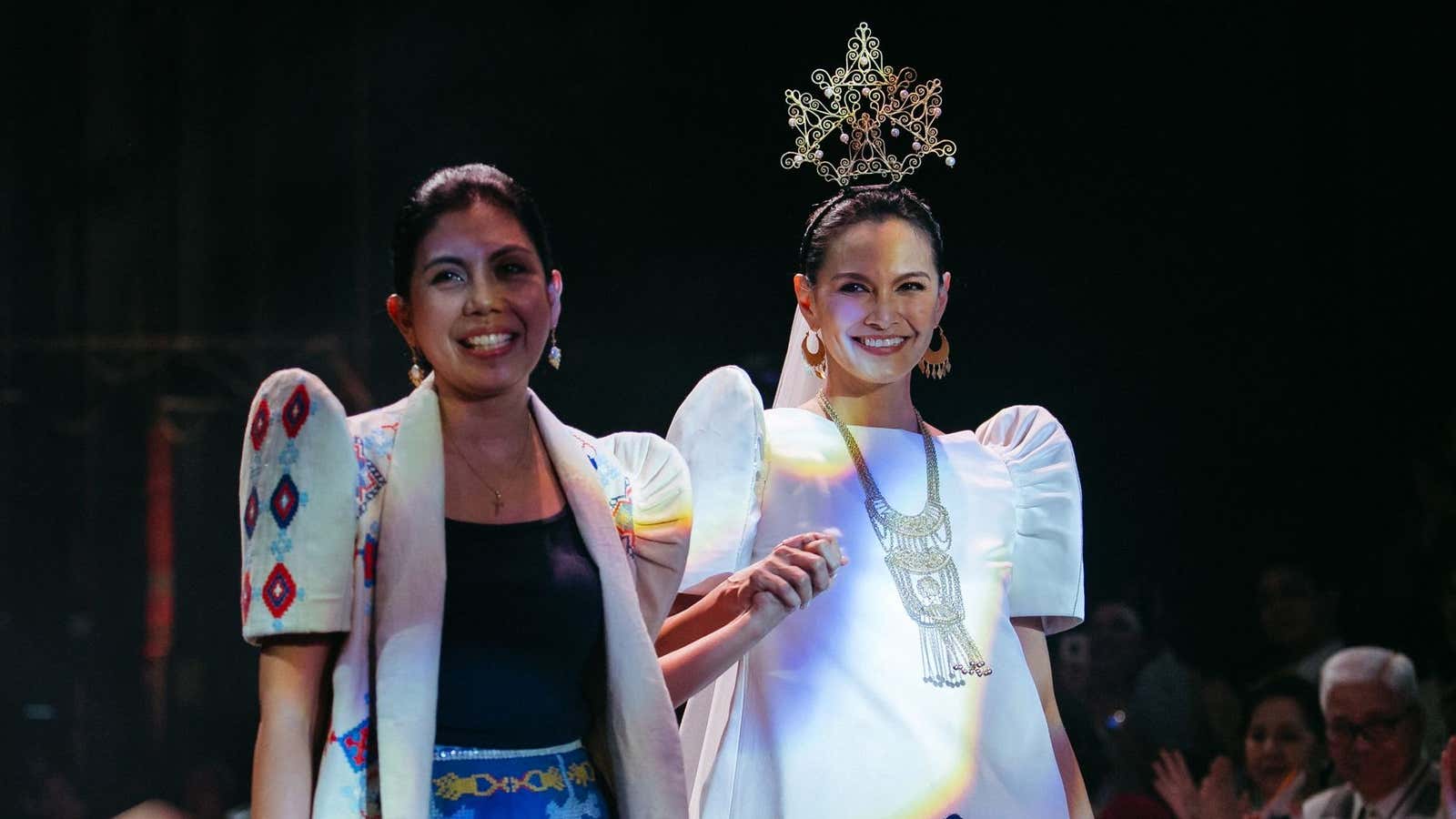The terno is back in fashion in the Philippines, and it could not have come any sooner.
Last Sunday (Nov. 11), a well-dressed crowd gathered at the Cultural Center of the Philippines for “TernoCon,” a new campaign to revive the country’s traditional dress. The terno—a dress with distinctive, oversized sleeves—had fallen out of fashion in recent decades in the Philippines in favor of Western clothing. But at the event, nearly all female attendees showed up in variations of the national costume, making it what is believed to be the largest gathering of ternos in recent Filipino history.

The evening was far from the usual costume soiree for Manila’s elite. For most attendees, there was a sense that donning the beleaguered national dress was an act of reclaiming Filipino identity.
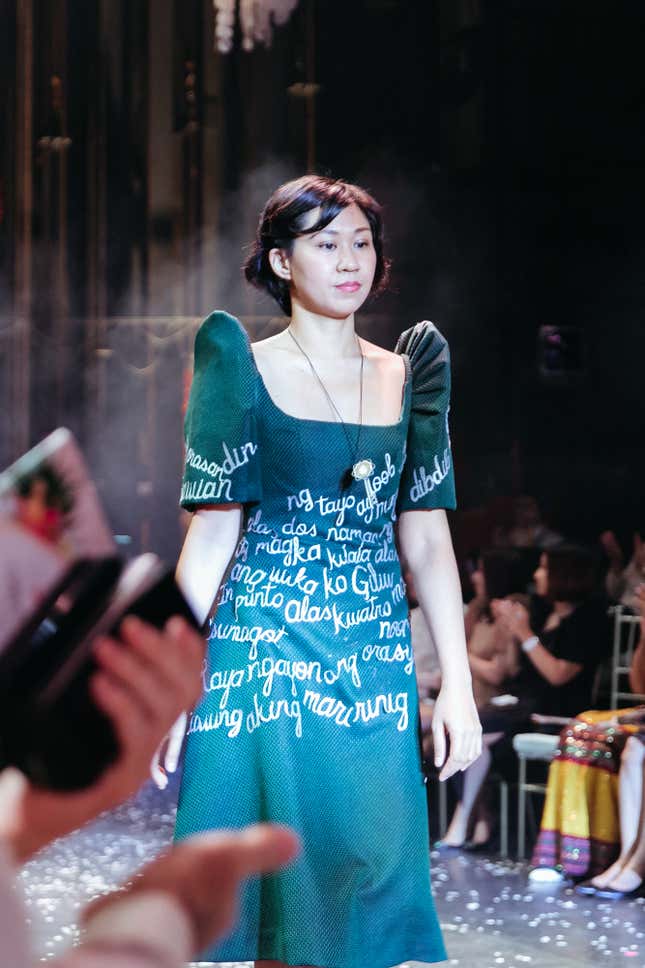
“The terno is not just a garment,” said Ben Chan, the country’s top fashion mogul who funded TernoCon. “It’s a symbol, an icon. It’s an art and a craft. If we do not pass on this tradition, it will die in our hands.”
Ruled by Spain and the US for nearly 400 years, Filipinos had been indoctrinated into believing in the superiority of Western thought. That colonial mentality still shapes the Filipino psyche in many ways and manifests itself in fashion. The fact that most Filipinas today very rarely, if even, wear the traditional butterfly sleeves speaks to how they’ve styled themselves fully after foreign models.
To be born a Filipino is a fact, but isn’t always a point of pride. It’s rarely celebrated in the same way the French or the Irish can exuberantly tout their heritage.
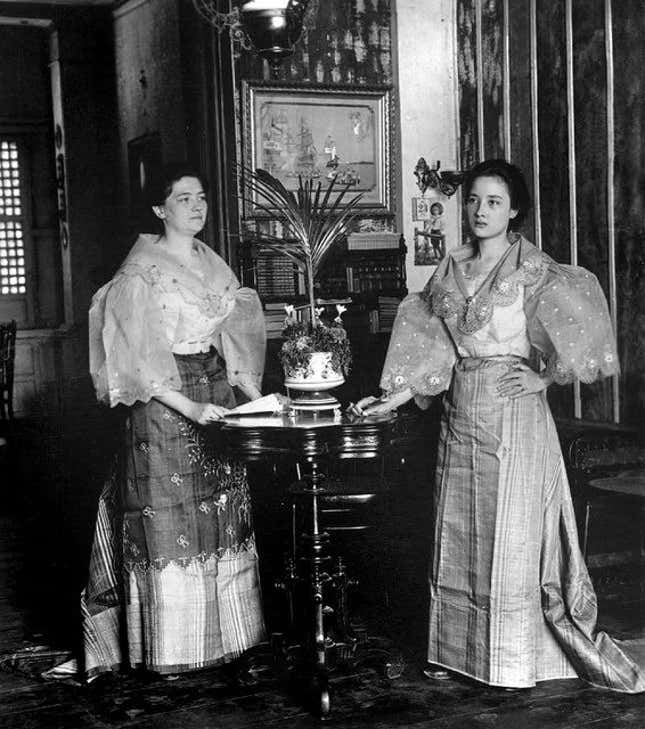
“The joke is that Filipino women spent three centuries in a convent and half a century in Hollywood,” says Gino Gonzales, an award-winning theater designer and TernoCon’s artistic director. “In many ways, it was true.”
In an interview with the fashion history podcast Dressed, Gonzales explains how Spaniards imposed a new mode of clothing when they colonized the verdant archipelago in the 16th century. Spaniards took issue with the skimpy, lightweight clothing indigenous Filipinos wore in the intense tropical heat. “The indigenous clothing supposedly scandalized the friars and told the females to cover up with additional layers,” explains Gonzales who co-authored a book about the evolution of the Philippine national dress.
Their colonizer’s mandate to cover up resulted in a multi-layered dress called the “traje de mestiza,” which later evolved to the flat-sleeved terno in the 1920’s.
Dictator chic
Many blame the decline of the terno on Imelda Marcos. The 89-year old former first lady, found guilty of graft last week, wore the terno so often that it became associated with her brand of dictator chic.
A former beauty queen with elegant shoulders, Marcos wore the terno magnificently and religiously in public appearances. “She wore it day and night and would have three- to five- terno changes a day depending on the occasion,” says Gonzales. He explains that because the Marcos dictatorship lasted for 20 years, younger generations forget that the terno had been worn by other first ladies and masses alike.
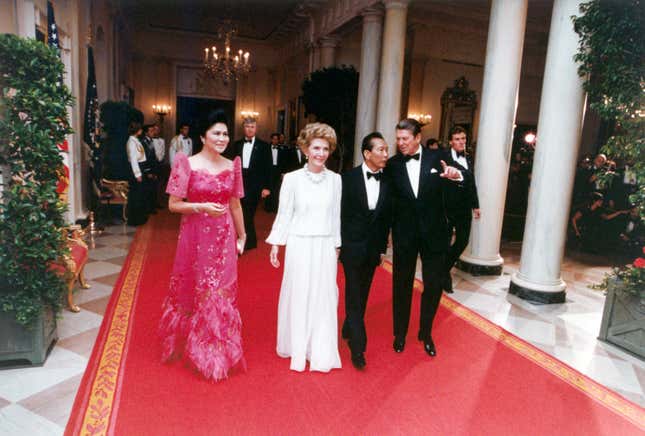

Corazon Aquino, the populist president who succeeded Ferdinand Marcos, ditched the butterfly sleeves in favor of Western style suits to distance herself from the aura of the corrupt Marcos regime. As the country’s first female commander-in-chief, Aquino also wanted a uniform that projected authority.

“We have to depoliticize the terno,” says Filip + Inna designer Len Cabili. Cabili, whose fashion line spotlights artisanal weaving from the country’s southern region, suggests that perhaps Filipino heritage ought to supersede political rivalries.
True to the event’s nonpartisan spirit, among TernoCon’s guests of honor was Irene Marcos, Imelda’s youngest daughter. Marcos didn’t make a grand speech, but appeared to just enjoy mingling with other women proudly wearing the butterfly sleeves her mother helped popularize.
Reviving a dying craft
Gonzales explains that an influential couturier named Pacita Longos first flattened the traje de mestiza‘s voluminous bell sleeve to reflect the fashion of the flapper age in the 1920’s. The terno’s bodice today takes many forms—a ball gown, a shift dress, even a pantsuit—but the distinctive butterfly sleeve is what makes it a terno. This particular sleeve design is what Gonzales and his peers are fighting to preserve.
“We’re doing this primarily because we learned that no one knows how to make a terno sleeve anymore,” he explains.
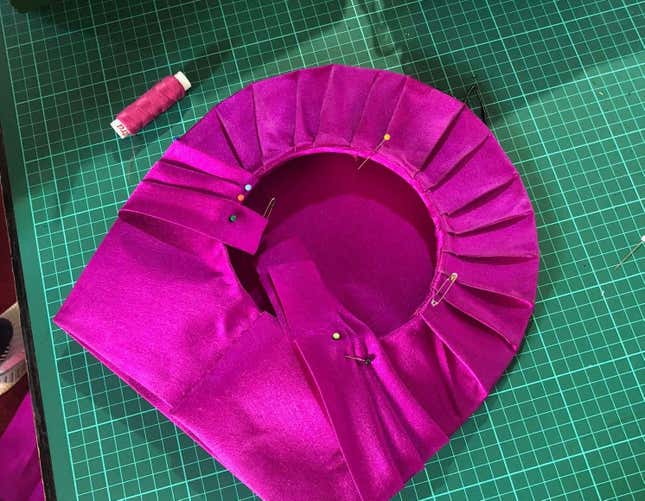
The TernoCon gala is the culmination of a year’s worth of terno-making workshops across the Philippines. Gonzales traveled to the country’s three main regions—Luzon, Visayas and Mindanao—to recruit a class of designers interested in learning how to make the proper sleeve.
He asked veteran fashion designers—Inno Sotto, Cary Santiago, JC Buendia and Cabili—to guide participants in constructing ternos to showcase at the Nov. 11 gala.
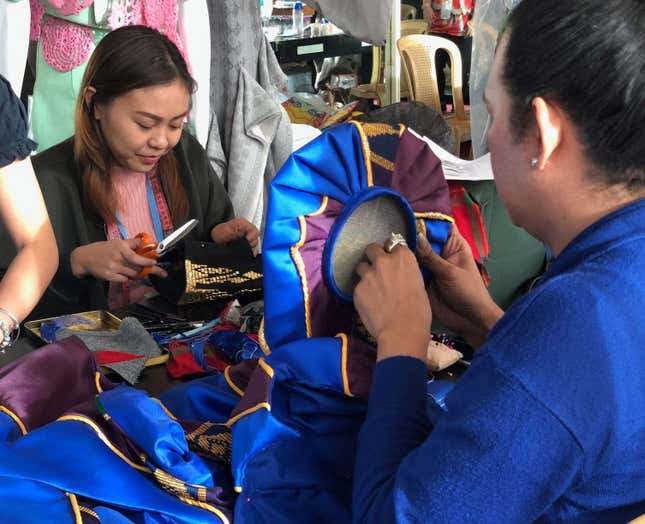
“Forget the dresses. The terno sleeves need to look like good terno sleeves,” says Sotto, a venerated dressmaker who served as the lead coach for TernoCon. “That’s the whole point of this: There should be an entire group of designers who actually know how to make the proper sleeve.”
A proper terno sleeve has 13 pleats and rises an inch or two above the wearer’s shoulder, explains Gonzales. If you don’t construct it well, the sleeve will collapse into a sad, puffy sleeve—and that’s not a terno.
The modern terno
TernoCon’s main event was a spectacular hour-long fashion show. About 90 new ternos showcased the myriad interpretations of the national dress. Standouts include a dreamy pink taffeta gown by Sotto, a smart embroidered leather ensemble by Cabili, and two impeccably constructed ternos that garnered gold medals for designer Marlon Tuazon.
But evening’s showstopper was a collection of bird-themed gowns by Santiago. With a pair of eagles on a silver gown and two 3D birds in another, Santiago showed thrilling haute couture possibilities for the traditional dress. “A terno always looks majestic,” he says. “Even a simple dress becomes majestic.
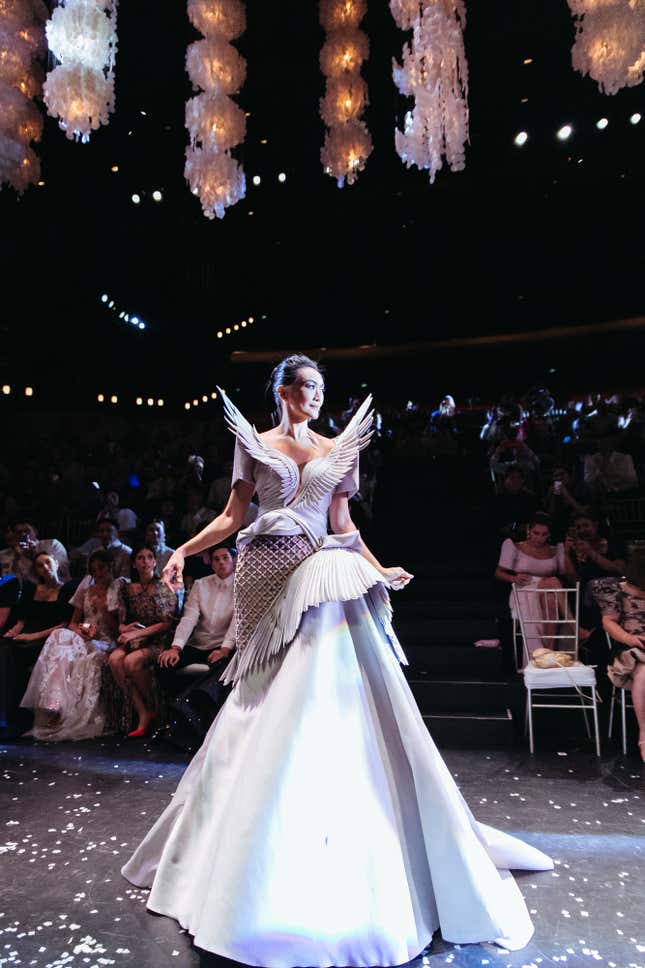
The gala offered a dazzling proof that the terno could be worn for all occasions, by any woman, in all ages and sizes. The presence of terno-wearing teenagers like Gabrielle Viray who had butterfly sleeves affixed to her white prom dress offered reassurance for the dress’s survival. “I love the terno and I’m very proud to wear it,” she says.
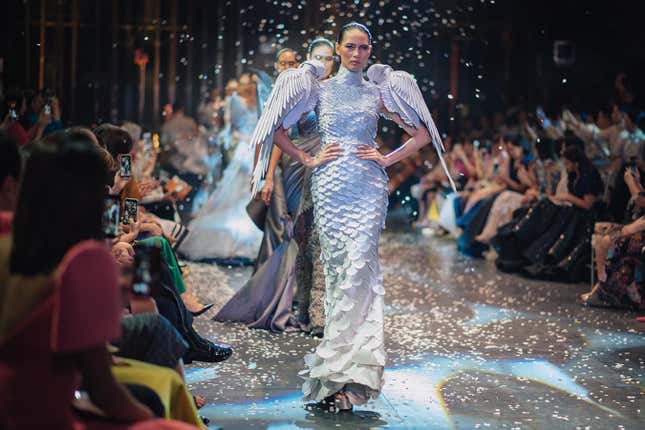
Gonzales suggests that the terno may even have some type of mythic power—like all great clothing does. ”For the few Filipinos today who have tried to get themselves in a terno, there’s an understanding how that garment has the ability to bestow an element of pride—from the way it makes you sit upright, the way it commands attention when you enter a room, to the way the sleeves frame your face,” he says.
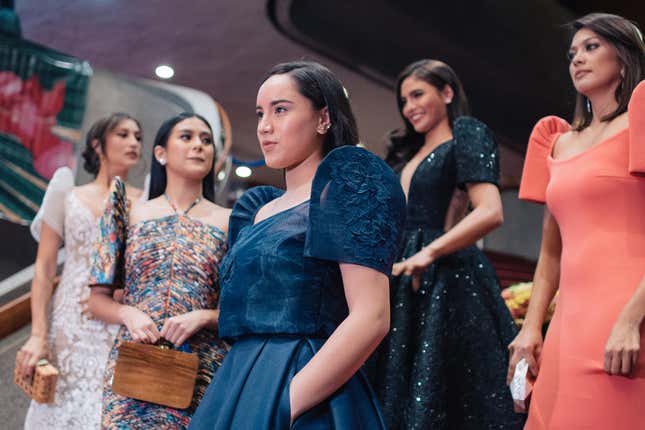
“It’s difficult to explain in words, but you’ll know it when you see a Filipina in a terno,” Gonzales expounds. “There is a Spanish word for it: poder or power… I think the terno possess poder and that’s bestowed on the woman who wears the terno.”
